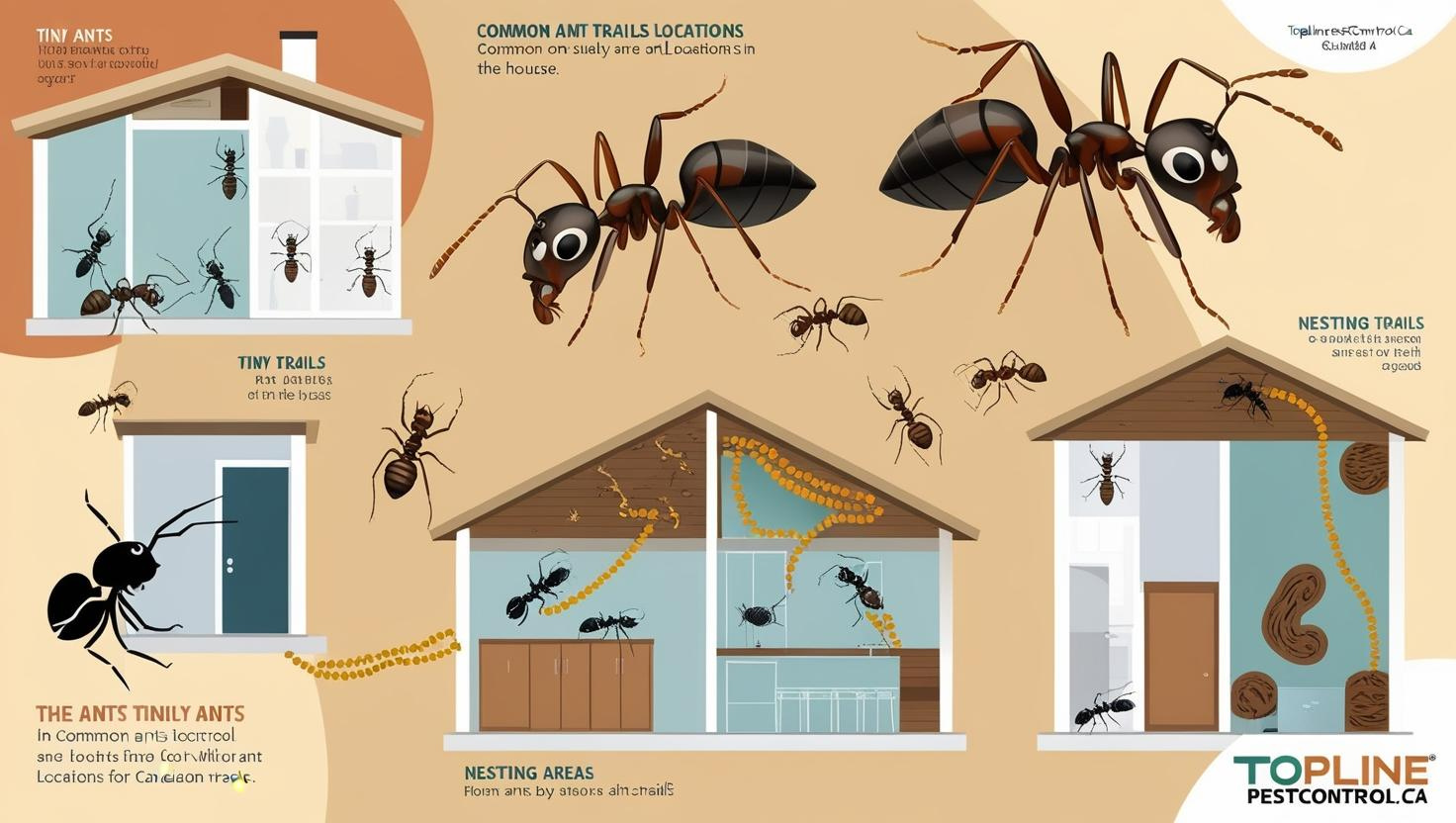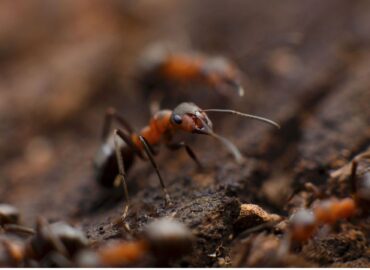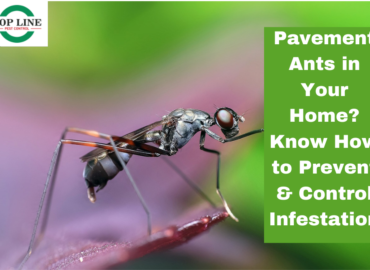Tiny ants invading your home can be both frustrating and challenging to handle. In Canada, various ant species, such as pavement ants and odorous house ants, often find their way indoors searching for food, water, and shelter. In this essential guide about tiny ants in house BC, we will delve deeper into the reasons behind their presence, explore effective ways to eliminate them, and provide valuable tips to prevent future infestations. Understanding ants is crucial in addressing the issues they pose, as it allows homeowners to implement the most effective strategies for control and prevention.
Why Are Tiny Ants in Your House?
Ants are not just a minor inconvenience; they can also indicate underlying issues within your home. For instance, a sudden influx of ants might suggest that there are cracks in your walls or that food is being improperly stored. Addressing these issues can prevent further infestations and help maintain a clean living environment.
Understanding the behavior and habits of ants is essential for effective control. For example, pavement ants are known for their ability to thrive in urban areas, easily navigating through small openings to access food. In contrast, odorous house ants tend to prefer sugary substances and can often be found in kitchens and dining areas. By recognizing these patterns, you can better anticipate where to target your prevention efforts.
Ants are social insects that operate in colonies. If you notice a trail of tiny ants in your house, it’s often due to:
- Food Sources: Ants are attracted to crumbs, sugary spills, and improperly stored food.
- Moisture: Leaks or damp areas in your home can attract ants looking for water.
- Entry Points: Cracks in walls, windows, and doors allow ants to enter your home easily.
- Seasonal Behavior: In Canada, ants often invade homes during warmer months when they are most active.
How to Get Rid of Tiny Ants in Your House
Another crucial aspect of ant management is recognizing the signs of an infestation early on. This can include spotting small trails of ants or finding nests in or around your home. The sooner you address these signs, the easier it will be to eliminate the problem before it escalates.
Eliminating tiny ants requires a combination of immediate actions and long-term prevention strategies. This multifaceted approach not only addresses the current infestation but also lays the groundwork for future prevention. Understanding the life cycle and behaviors of ants will enable you to choose the most appropriate methods for eradication.
1. Identify the Ant Species
Furthermore, knowing how each ant species reacts to different control methods can greatly enhance your success rate. For instance, while certain baits may attract odorous house ants, they may not be as effective for pavement ants. Conducting thorough research on the species you are dealing with can lead to more efficient results.
Identifying the specific species of ants present in your home is essential for determining the best elimination strategy. Different species may require different approaches. For example, pavement ants typically build their nests under concrete and can enter homes through cracks. Understanding their nesting habits will help you locate and treat the source of the problem effectively.
- Pavement ants typically build nests under concrete and enter homes through cracks.
- Odorous house ants are attracted to sweet foods and emit a distinctive odor when crushed.
Using ant baits effectively also requires strategic placement. Consider placing multiple baits in different areas to increase the chances of attracting ants. Monitoring the baits regularly and adjusting their locations if necessary can enhance the overall effectiveness of your ant control strategy.
Moreover, sealing entry points goes beyond just visual inspections. It’s important to regularly check for new cracks and gaps that may appear over time due to settling or wear and tear. By maintaining vigilance, you can prevent ants from finding new ways to invade your home.
2. Clean Thoroughly
- Wipe down surfaces to remove food residue.
- Vacuum regularly to eliminate crumbs and debris.
- Seal food in airtight containers.
Professional pest control services not only provide immediate solutions but also offer long-term prevention strategies tailored to your specific situation. An initial consultation can help identify underlying issues that may contribute to ant infestations, ensuring a more comprehensive approach to pest management.
3. Use Ant Baits
Regular inspections should not be limited to just looking for ants. During these inspections, also check for other pest signs, such as droppings or damaged food packaging, which can indicate a more extensive problem. Addressing these issues early on will save you time and effort in the long run.
Place ant baits near trails and entry points. The ants will carry the bait back to their colony, effectively eliminating the entire nest.
4. Seal Entry Points
We take pride in our comprehensive inspections that identify not only the immediate problems but also potential future risks. Our customized treatment plans ensure that you’re not just dealing with the symptoms but addressing the root causes of your pest issues.
- Inspect your home for cracks and seal them with caulk.
- Install weather stripping on doors and windows.
Exploring related articles can also provide additional insights into maintaining a pest-free home. By understanding the behaviors of various pests and learning about prevention methods, you can fortify your home against future infestations.
5. Call Professional Pest Control Services
If the infestation persists, consider hiring experts like Topline Pest Control. Our team specializes in safe and effective ant removal tailored to Canadian homes.
Finally, remember that an ounce of prevention is worth a pound of cure when it comes to pest control. By implementing the strategies discussed in this guide, you can significantly reduce the likelihood of tiny ants invading your home. For professional assistance, trust Topline Pest Control to provide reliable and effective pest management solutions. Contact us today to schedule an inspection and take the first step toward an ant-free home. By working together, we can ensure that your space remains comfortable and inviting.
Preventing ant infestations is crucial to maintaining a comfortable home environment. By following these practical tips, you can significantly reduce your chances of encountering ants:
Prevention is key to keeping your home ant-free. Follow these tips:
- Regular Inspections: Check for signs of ants, especially during spring and summer.
- Maintain Cleanliness: Keep your kitchen and dining areas clean and free of food debris.
- Fix Leaks: Repair any plumbing issues to eliminate moisture sources.
- Landscaping Tips: Trim vegetation near your home and avoid stacking firewood against walls.
Choosing Topline Pest Control for your ant problem means opting for a service that is well-versed in the specific challenges faced by homeowners in Canada. Our approach is not only effective but also mindful of the environment. We believe in sustainable solutions that protect your home, family, and pets while effectively dealing with pests.
At Topline Pest Control, we understand the unique challenges Canadian homeowners face with pest infestations. Our services include:
- Comprehensive inspections
- Customized treatment plans
- Eco-friendly solutions
- Long-term prevention strategies
Related Articles
- How to Get Rid of Bed Bugs: A Guide for Canadian Homes
- Tips for Preventing Rodent Infestations in Winter
- Common Pests in Canadian Homes and How to Handle Them
- Signs of a Termite Infestation and What to Do
- Eco-Friendly Pest Control Solutions for Your Home
Final Thoughts
Dealing with tiny ants in your house can be a nuisance, but with the right approach and preventative measures, you can reclaim your space. For professional assistance, trust Topline Pest Control to provide reliable and effective pest management solutions. Contact us today to schedule an inspection and take the first step toward an ant-free home.




